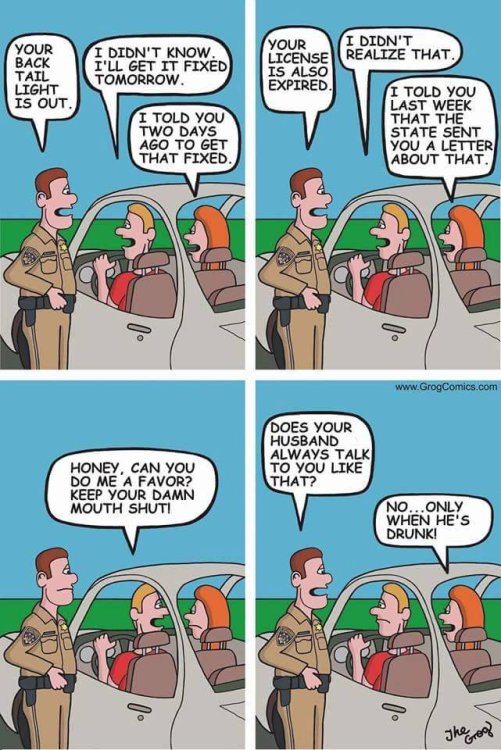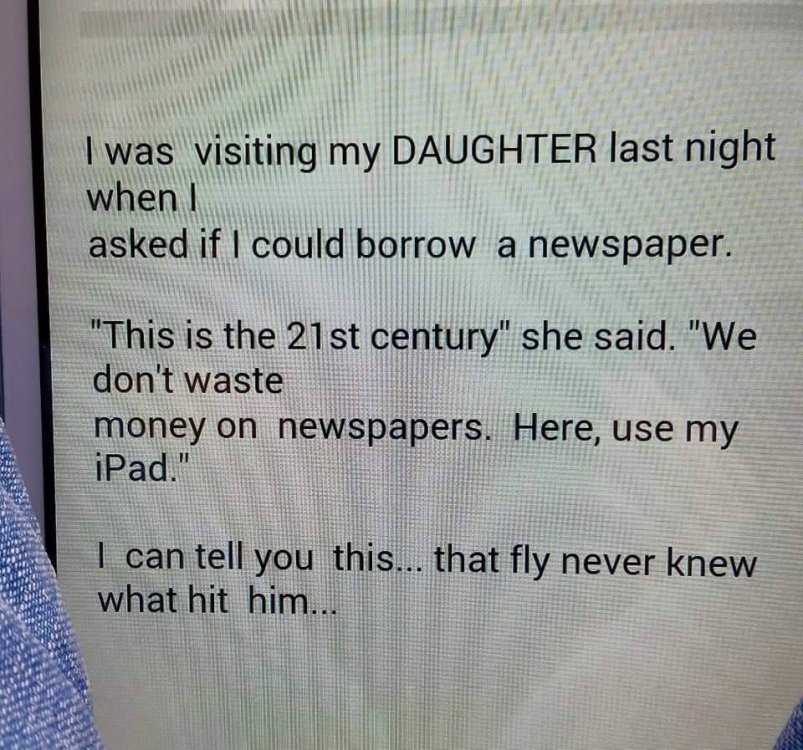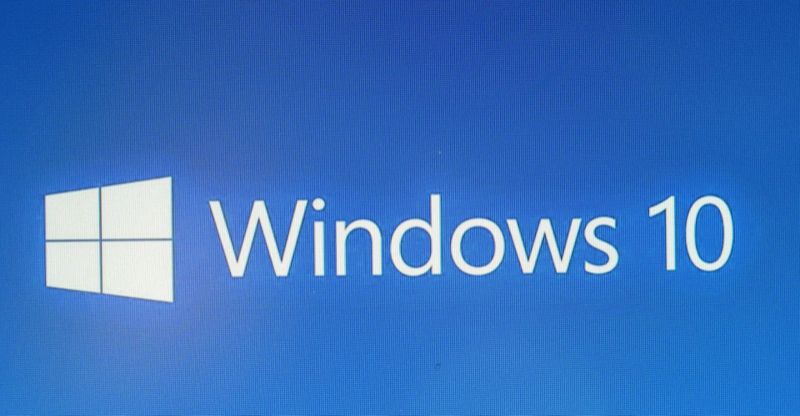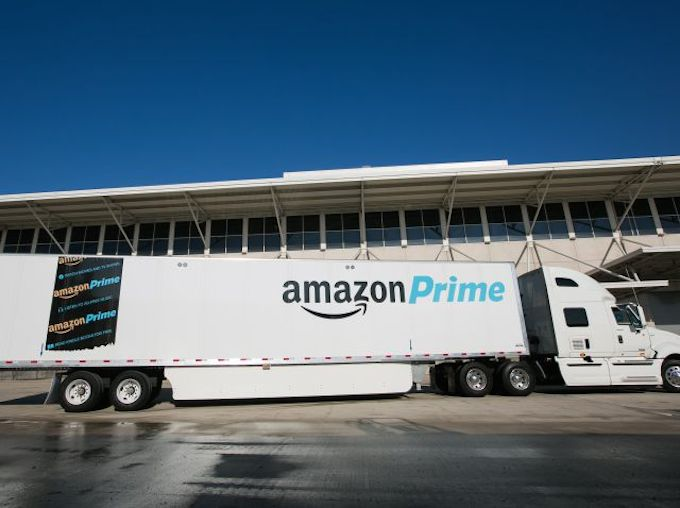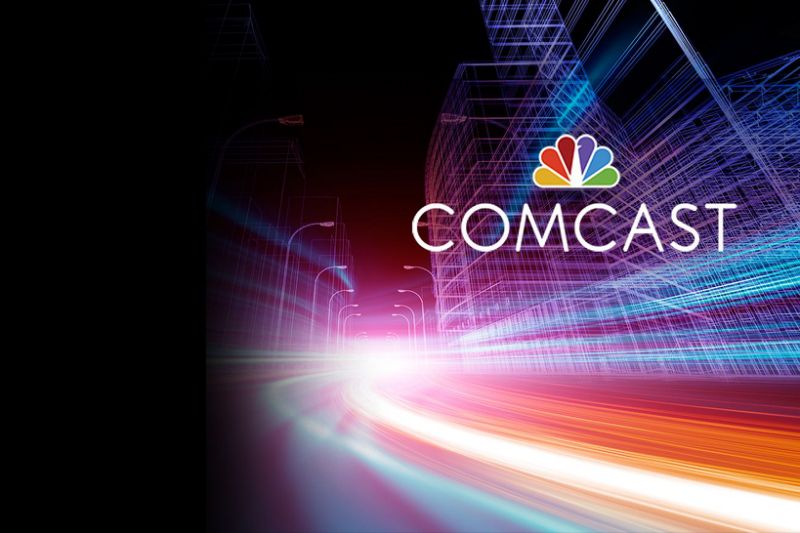-
Posts
7,282 -
Joined
-
Last visited
-
Days Won
2,416
Content Type
Forums
Blogs
Events
Resources
Downloads
Gallery
Store
Everything posted by allheart55 Cindy E
-
-
Looks great, Bob!
-
Xfinity Internet subscribers living in Miami, Fla., Little Rock, Ark., or any other city on this list are already well aware of Comcast’s slow-rolling, evil plot to try to limit our Netflixing. The details of the company’s Data Usage Plan Trial – which all of those customers are already part of – were explaained in a piece by Yahoo Tech’s Rob Pegoraro last year, but the short/skinny is that 300 GB of Internet data are allotted to households each month; if you exceed your limit, you’ll have to fork over another $10 for every 50 GB of data. Sucks for those customers, right? Some day soon it may also suck for you. Comcast’s justification for trying to slime its way out of providing unlimited data to its customers was recently revealed in a company memo: “e-mail [users] shouldn’t pay the same as subscribers … [who] binge-watch Web videos.” We don’t see any reason why Comcast won’t eventually spread this program to all of its customers, which would open the door for competitors to do the same. So how much Netflix can you fit in under a 300 GB cap? At full HD quality (1080p), you can stream roughly 160 30-minute TV show episodes (commercials removed, of course) or about 29.5 movies (based on one calculation that puts today’s average movie length at 130 minutes). Any way you slice it, we’re talking at least 64 hours of Netflix streaming – and probably actually more, because Netflix will often bump HD video streams between 720p and 1080p, as bandwidth allows. https://www.youtube.com/watch?v=H5fG4NbCLD4 Source: yahootech
- 15 replies
-
- comcast
- internet data
-
(and 2 more)
Tagged with:
-
I'm really starting to get annoyed with the MS 10 upgrade nag on my Win 7 machine.
- 4 replies
-
- free lunch
- microsoft
-
(and 3 more)
Tagged with:
-
Facebook also split its instant messaging into a different app called Messenger in 2011. It’s now got more than 800 million monthly users. Facebook also owns a bunch of other popular apps, most notably Instagram, which the company bought for $1 billion in 2012. With more than 400 million monthly users, that seems like a steal nowadays. Today, more than 1.5 billion people use the social network every single month. And more than 1.4 billion people use it on their mobile phones every month. Not bad, considering 12 years ago smartphones didn’t even exist. The post Facebook looked completely different 12 years ago — here’s what’s changed over the years appeared first on Business Insider
-
Happy 12th birthday, Facebook! As you’d expect, the site looks completely different now compared when it first launched on February 4, 2004. But in case you haven’t been a loyal user since the beginning, we’ll give you a little tour of how the site evolved. Check it out: (Former Business Insider reporter Megan Rose Dickey also contributed to this piece.) Remember when Facebook was called Thefacebook? It started at Harvard and slowly opened up to other colleges. Mark Zuckerberg originally described himself as not only the founder of Facebook, but also as the “Master and Commander” and “Enemy of the State.” We love this gem about “poking” from one of the original FAQ pages. Here’s what a Facebook group page looked like in 2005. For comparison, this is what a Facebook group page looks like today. Back in 2005, before the News Feed launched, Facebook was essentially just a collection of disconnected profiles. The company decided to drop the “the” from its name in 2005, after it bought the domain Facebook.com for $200,000. Source. Check out Mark Zuckerberg’s profile in 2006. Facebook launched the News Feed to display all your friends’ activity in a single timeline in 2006. At the same time, Facebook introduced the Mini-Feed. But the entire concept of a News Feed resulted in some very public outrage. Some users even went so far to call one of Facebook’s product managers the devil. In 2009, Facebook’s home page got a facelift. Posts started to stream through the News Feed in real-time. That same year, Facebook also introduced its algorithm for determining the order in which status updates should be displayed. In 2010, Facebook brought notifications to the top navigation bar following yet another redesign. Facebook rolled out a new, more visual profile in 2010. It added a row of recently tagged images below your name and basic profile information. Facebook launched the News Ticker in 2011 so users could keep up with their friends while browsing through other parts of Facebook. The Facebook Timeline feels like it’s been around since the beginning. But it launched in 2011 to act as a virtual timeline of your entire life. Facebook started flooding the News Feed with sponsored stories in January 2012. Here’s what Facebook’s News Feed looks like today. This is what Facebook’s mobile app looked like when it first launched. It has been completely redesigned.
-
There is no such thing as a free lunch” has been the mantra of those cynical about the true cost of ‘free’ Windows 10. But as Microsoft increases pressure on users to upgrade, it turns out the real cost of Windows 10 lies somewhere far less expected… Windows 7 and Windows 8. Yes, the operating systems which users already paid for (either directly, or indirectly in the cost of a new computer) are getting more expensive by the day. The cost comes in terms of lost productivity, flexibility and enjoyment as Microsoft does its best to make life for Windows 7 and Windows 8 users so unbearable they give in and upgrade to Windows 10. Prior to February 2016 the cost was already pretty high. On the irritation side Microsoft introduced upgrade prompts for Windows 7 and Windows 8 which reinstalled themselves if users disabled them. The upgrade prompts then became pop-up windows which were continually reworded to cut down choice until ‘Upgrade now’ or ‘Upgrade tonight’ or just one option – ‘Upgrade now’ – were all that was presented. ‘Get Windows 10′ notifications and upgrade pressure is being cranked ever higher. Image credit: Gordon Kelly In addition Microsoft also hit many unsuspecting Windows 7 and Windows 8 users in the pocket by silently downloading the whole of Windows 10 (4-6GB) into a secret folder on their computers, even if users had repeatedly stated they did not want to upgrade. Those who have Internet contracts with data allowances found themselves facing inexplicable bills for breaking through those allowances. Windows 8 users could stop this by setting their computers to a metered allowance (Windows 7 users were out of luck) but most didn’t know to do this in advance. And this was just the start. Amid falling adoption rates, Microsoft announced in October that the real war on users refusing to upgrade to Windows 10 would begin in January. And so it has proved. Turning The Screw Microsoft has followed through on its widely criticized decision to give Windows 10 ‘Recommended’ status in Windows Update. This means installations begin automatically for users who have not changed the default Windows Update settings (the vast majority) so they will now have to proactively cancel a Windows 10 upgrade which has already started, rather than the prior approach of saying they don’t want it to start. Fine. Tech savvy users and the most belligerent were happy to cancel the installation and remain on the copies of Windows they chose to pay for. Yet it still isn’t that simple. Infoworld reports those who cancelled the installation after it started are finding it restarts every time they reboot their computer. Furthermore many are not even spotting the automatic install in the first place since it comes hidden in the form of a Microsoft EULA (end user license agreement) which the user is asked to accept. While not advisable, it is commonplace behavior for customers to blindly accept EULAs without paying full attention to them, but if you do in this case then Windows 10 begins installation and cannot be stopped. Yes this is irritating, but then again with careful reading those users who wish to avoid Windows 10 can still do so and it remains “optional” (as Microsoft continues to stress) even at the cost of continual irritation. You can hold out or even enlist the help of third party tools. Microsoft is leaving users with little to no choice about upgrading to Windows 10. Image credit: ComputerWorld Except Microsoft’s other Windows 10 January upgrade measure even stamps on that plan because how Windows 7 and Windows 8 are supported has also now been changed. When you bought Windows 7 and Windows 8 (again I stress you did ‘buy’ them as they’re built into the cost of your computer) Microsoft promised to support them until 14 January 2020 and 10 January 2023 respectively. Now following the January changes, this is only true on the condition you don’t upgrade your computer to use current or future generation silicon from Intel, AMD or Qualcomm. In short: your computer hardware must remain ‘old’ if you want to keep using Windows 7 or Windows 8 – implausible for anyone hoping to have a respectable system in 2023. Meanwhile if you buy a new computer and attempt to install Windows 7 or Windows 8 on it, the support will be invalid which means no antivirus or security patches. If you want a new computer you will have to use Windows 10 – the first time such a restriction has been made in the 30 year history of Windows. For now the hardware restriction only applies to businesses, but it seems inconceivable it will not eventually be rolled out to consumers as well. And there is one more trick. For those complaining about Windows 10’s extensive user tracking through telemetry (some of which cannot be disabled) putting them off upgrading, Microsoft has a solution: it has retroactively installed all the same user tracking on Windows 7 and Windows 8 so this is no longer a reason to avoid upgrading! The Increasingly Impossible Choice All of which leaves Windows 7 and Windows 8 users in the following situation: Invalidating their support if they upgrade their current computers or buy new computers Seeing continual Windows 10 upgrade prompts which reinstall themselves if disabled Facing automatically starting installation attempts every time they reboot their computer Permanently giving up 6GB of their hard drive space to hold the Windows 10 installation files (typically it re-downloads if removed) Accepting the same user tracking and data logging behavior as Windows 10 A simple monetary figure cannot be tagged onto these such restrictions, nagging or tracking but for those using Windows 7 and Windows 8 on a daily basis (currently 65% of the world’s computers) the cost is extremely high. Of course Microsoft has some marketing rhetoric here saying it allows users to roll back to Windows 7 or Windows 8 from Windows 10 if they don’t like the experience. But the roll back simply leaves them facing all the same hassles. Microsoft doesn’t switch them all off just because you ‘tried’ Windows 10. Windows 10 is pegged as a safe haven while Microsoft sets fire to Windows 7 and Windows 8. Image credit: Microsoft None of which – I must stress – has anything to do with whether Windows 10 is any good. This isn’t about it being ‘better’ than Windows 7 or Windows 8, it’s about respecting choice. For some Windows 7 and Windows 8 users they are simply happy where they are or they have critical legacy programs or hardware which has issues on Windows 10. No matter, the same measures are being taken against everyone on Windows 7 and Windows 8 – there is no ‘Special Case’ option. As such when (and it seems increasingly likely of being when) Windows 10 achieves Microsoft’s one billion installations target, it will be a hollow victory since it comes largely on the back of making the cost of staying on Windows 7 and Windows 8 too much to bear. In the words of Wayne Williams at BetaNews: “When Microsoft next announces how wonderfully well Windows 10 is doing, and how many more million users have been added from yesterday onwards, it will be a meaningless number, a hollow achievement, and certainly nothing for the company to be proud about.” Yes, there really is no such thing as a free lunch. Source: forbes
- 4 replies
-
- free lunch
- microsoft
-
(and 3 more)
Tagged with:
-
-
Let us know how you fare, Tony.
-
If it's too faint to see, then it sure sounds like the inverter to me. Have you tried connecting the laptop to an external monitor, Tony?
-
It's completely unfair that anyone can implement a lawsuit just because someone expressed an opinion on the validity of a software product. Kudos to Bleeping Computer for not caving in to the pressure.
- 10 replies
-
- 1
-

-
- anti-malware
- enigma
-
(and 3 more)
Tagged with:
-
Have you ever wondered how customers could slide their cards through and enter their PINs on a compromised payment terminal without even noticing? While some skimming schemes involve Bluetooth transmitters and require disassembling the device, installing a skimmer can be as simple as snapping an identical part over an existing card reader. That’s what independent security reporter Brian Krebs saw recently: a skimmer pulled from a payment terminal at a Safeway store. You’ve probably used dozens of Verifone brand terminals just like it in your shopping life. The skimmer is very simple: it looks exactly like the parts of the device that it snaps over, only it captures users’ card numbers and PINs almost invisibly. Payments still go through fine, and a retailer would only notice that something was amiss while checking their equipment, if a customer complained, or if the scammer were caught in the act while placing or removing the skimmer. How can you protect yourself from invisible skimmers? The simplest way may be to use the chip reader instead of the magnetic stripe reader, as long as your bank has issued chip cards and the retailer has activated EMV payments. When that isn’t an option, try simply pulling on the device: a temporary cover will snap off. Safeway Self-Checkout Skimmer Close Up [Krebs on Security]
-
-
I think that this is a worthy cause which in the end benefits all tech forums. People can't be afraid to test software and if needed, to give a bad review for fear of retaliation by the software owner. A lot of the donations were done anonymously.
- 10 replies
-
- anti-malware
- enigma
-
(and 3 more)
Tagged with:
-
BleepingComputer is a valuable asset to the Internet, in my opinion, as it is often one of the first sites to warn of newly reported ransomware; volunteer security professionals also regularly provide answers to any number of other computer questions. Yet BleepingComputer is seriously under fire for daring to engage in free speech as Enigma Software is suing the site over a negative review of Enigma’s flagship anti-malware program SpyHunter. But hey, “freedom isn’t free” and being sued implies needing money for a defense, as BleepingComputer’s owner Lawrence Abrams said, “If BleepingComputer does not get the help we need and we lose this battle, it will only embolden Enigma Software to try to silence other bloggers, IT technicians, or computer security enthusiasts.” I don’t know about you, but I hate people attacking free speech and lawsuits like this – SLAPP lawsuits; Decrypted Tech described SLAPP lawsuits since many people may not be aware of them. To put it bluntly SLAPP (Strategic Lawsuits Against Public Participation) lawsuits are ones that attempt to censor information or public discourse on a particular topic. The most common ones are from corporate entities that are trying to stop negative information about their products or other areas from getting out. The negative information is not slanderous or libelous in nature and in most cases can be backed up with documentation. Still the corporate minds try the threat of litigation to remove the information. Since Enigma Software chose to sue BleepingComputer to have the review removed and potentially to collect damages, “this type of suit fits the definition of SLAPP to a T,” the editorial states. “There is nothing in the post, or thread that is inflammatory, libelous or not documented from multiple sources. Enigma software simple wants to remove the information from a well-known and widely visited website so that they can continue to sell their product that clearly has deficiencies.” Enigma Software claims in its lawsuit pdf) that BleepingComputer has the negative SpyHunter review because it takes part in an affiliate advertising program which grants BleepingComputer a commission for redirecting users to Malwarebyte’s site. The Enigma Software Group claims, “Bleeping not only has unlawfully benefited from its smear campaign to the detriment of ESG, it has damaged the reputation of ESG by refusing to take down its false and misleading statements which have been reposted numerous times on other anti-spyware related forums and websites.” Well maybe Enigma should do a little more Googling as there are indeed numerous negative reviews that are not simply regurgitated versions of BleepingComputer’s. Those results, however, are not top search result hits as is Bleeping’s. Furthermore, Engima claims “Bleeping holds itself out as an expert in computer security matters.” Instead, Enigma claims Bleeping and its members “are not computer security experts, but rather they are software resellers purporting to give consumer advice.” The lawsuit goes on to attack BleepingComputer and its moderators, particularly “Quietman 7” who wrote the negative SpyHunter review in 2014. The company has a long litany of complaints it calls false statements, especially in regard to the advice to uninstall SpyHunter and install Malwarebytes instead. The review, it should be noted, is properly sourced with references from various sites as in it wasn’t pulled out of thin air. One thing to note, the review claims AV-Tests has not tested SpyHunter; even if that information is “old,” I still didn’t pull up any search results showing AV-Test Labs tested SpyHunter for home Windows users. Why not try that route first? And even if Malwarebytes is not exactly impartial to BleepingComputer, the well-respected anti-malware folks pointed out, “The content is provided by the volunteer efforts of security professionals and the more than 700,000 registered users who ask and answer all questions presented on the site. To summarize, Bleeping Computer is a valuable resource in the efforts to help users live in a malware-free world.” “Bleeping Computer was created and is devoted to helping consumers fix their computers and remove viruses for free,” Abrams told Softpedia. “Whenever we help people we always recommend free reputable programs that are both free-to-scan and free-to-clean so that our visitors do not have to spend any money.” He added: “It is incredibly frustrating that a company comes along and slaps us with a lawsuit because a volunteer moderator expressed his honest opinion about a product to protect consumers. Our moderator, Quietman7, earns nothing from helping on the site and yet has posted over 40,000 posts in the forums. If you think about the amount of time he has devoted to helping others for free it is staggering!” BleepingComputer is asking for help to fight the “frivolous lawsuit and defend its right to free speech!” It needs an astounding $100,000 to handle legal defense costs. If you can help, please do. Enigma will likely contact me to add a statement, but you can read all their statements in their lawsuit (pdf) if you are so inclined. I’ll warn you before you send it, I’m ticked and this is America where I’m entitled to my opinion; I’ve never tried SpyHunter as I personally like Malwarebytes … and now after attacking free speech, I never will try SpyHunter. Source: networkworld
- 10 replies
-
- anti-malware
- enigma
-
(and 3 more)
Tagged with:
-
A lot of PC users are going to see Windows 10 suddenly appear on their machines this week. Windows 10 has been changed to a ‘recommended’ upgrade - from an optional one. If your Windows 7 or 8 machine is set to automatically install recommended items (the default setting), it will download several gigabytes of data. Microsoft says that users still have the choice of whether to upgrade, according to a report in The Register. Microsoft said in a statement, ‘As we shared in late October on the Windows Blog, we are committed to making it easy for our Windows 7 and Windows 8.1 customers to upgrade to Windows 10. Windows 10: The 10 things you need to know about Microsoft's new operating system The files for the upgraded OS will download quietly in the background, and users will have to agree to a dialogue box before the system upgrades. Microsoft claims that the software is faster than previous versions - and it brings back features including the Start Menu, missing in Windows 8. Microsoft says, ‘Windows 10 starts up 28% more quickly than Windows 7, resumes faster and comes with more security features than ever.’ Microsoft says that new users will be given the option to revert to their original system within 30 days after installing Windows 10. The change only affects home customers, not business users. Source: yahootech
-
- automatically
- recommended upgrade
-
(and 1 more)
Tagged with:
-
I have been using Microsoft Edge as my default web browser since Windows 10 arrived last July however, since it is in the very early stages of development I have used IE11 a lot and also kept Firefox and Chrome on my system for backup. Early on Microsoft Edge has shown itself to be very fast and it has gained new features regularly over the last six months. I no longer find the need to leave Edge for another browser as much as I did in those early days. Microsoft Edge is also more than the UI we see on our Windows 10 devices as well and the Edge team has continued working on those internals to build a solid base for the new browser. What is missing from the UI are features that many of us take for granted – the biggest two are an ability to manage favorites and then extension support. We know they are coming because the Edge team has been talking about those features on and off over the last six months. Originally, extension support was expected last year but it was delayed for unknown reasons until this year. It has been talked about for quite a while that an upcoming test build of Windows 10 from the Redstone branch, which Windows Insiders are already testing, will have that support in it. Today, in a blog post from the Director of Program Management for Microsoft Edge Jason Weber, the team is laying out their priorities for 2016. Those 2016 focal points are: Deliver a modern extension platform powered by web technologies and the Windows Store Empower all Microsoft Edge customers through accessibility and inclusive design Continue to reinforce Microsoft Edge fundamentals; security, performance and efficiency Build thoughtfully for the future of the web Embrace more channels for community feedback and participation The biggest item you likely want to know about is extensions and they are the first thing addressed in this blog post and as previously promised – they are coming. “Last year, we announced our intent to deliver a new extension platform for Microsoft Edge to replace the often unreliable and insecure native add-ons of the past. Extensions are among the most requested features for Microsoft Edge and we’re building an extension platform powered by web technologies and familiar to developers. Any browser extensibility is a potential vector for malicious software, and our extensions will be vetted, delivered, and managed through the Windows Store. Our implementation is underway and we look forward to sharing early examples soon via the Windows Insider Program. We will share more information on developing and publishing your own extensions at a later date.” Placing the extensions in the Windows Store is a smart move so that they can be curated alongside of apps and it eliminates the need to have a second store just for extensions – economy of functionality since that process already exists for the Store. Other areas they are working on in 2016 is continued improvement of accessibility with work already done in the following areas as a base for that work: Modernize our accessibility system to support HTML5 and CSS3 on Windows 10. Enable HTML and Core Accessibility API mappings. Provide Accessible Name and Description computation and API mappings. Add accessible HTML5 controls and new semantic elements. Improve high contrast support. Modernize caret browsing and new input modalities. Improve visual impairment readability, focus, and selection. Deliver developer tools for building and testing accessible sites. In the area of fundamentals, the team believes that ultimately it is the browser which is responsible for making sure webpage code does not harm the user or breach their trust. These are the key areas they will continue focusing on in 2016: Lead the industry in JavaScript benchmark performance (good luck catching us). Advance product security across multiple dimensions (lots of surprises coming). Enhance keyboard scrolling performance and interactivity. Isolate Adobe Flash into a separate process and pause unnecessary content. Continue to push the GPU boundaries through native Windows graphics. Improve background tab suspension, timers, and processing. The Edge team will also continue building towards the future of the web to make sure the browser is ready for the new technologies that are coming and that it supports standards today and down the road. Finally, just like other areas in Microsoft, the Edge folks will be looking towards the community for feedback and they have a few channels that you can use to connect with them. Microsoft Edge Dev Blog Microsoft Edge Platform Status Microsoft Edge Suggestion Box on UserVoice @MSEdgeDev on Twitter Last month the team also took a look back on 2015 to see how things went with Microsoft Edge development during its first year on the operating system and to evaluate their work. It has some great stats and info about what they accomplished. Unfortunately, there is nothing about managing favorites in this update for 2016 so I hope that just means it is a little lower on the list but is there. Be sure to check out my work in using what is already available in Microsoft Edge to manage your favorites. This process will be functional for most users until something arrives from Microsoft. Source: winsupersite
-
Although I wasn't happy when Amazon raised their prices for the Prime membership, it's still well worth it to me.
- 5 replies
-
- amazon prime
- deliveries
-
(and 1 more)
Tagged with:
-
I ordered two separate items from Amazon early Friday morning. I do have Amazon Prime. I was pleasantly surprised to find the first item was delivered on Saturday morning and the second one was delivered on Sunday.
- 5 replies
-
- amazon prime
- deliveries
-
(and 1 more)
Tagged with:
-
After all these years of Amazon Prime being around, most of us know that a major perk of the subscription service is free, expedited shipping. But it looks like Amazon’s focus on getting packages to Prime customers has resulted in slower deliveries for shoppers who didn’t ante up $99/year for Prime. This is according to online retail analysts at StellaService, who recently told Forbes that Amazon’s regular shipping is starting to slip. “There are 40 companies on our list, and Amazon has always been in the top 10,” explains Kevon Hills, VP of research for StellaService. “This year, we’ve seen them fall outside of the top 10, which is the first time we’ve seen that happen.” Since Prime customers are not only paying for the guaranteed delivery dates, but also tend to be more regular and loyal customers of Amazon, it would seem to make sense that the company is going to great lengths to keep those shoppers happy. But is it happening at the expense of the millions of casual Amazon customers? “I think the focus, for them, has shifted from standard shipping to being fast and making sure they deliver on that promise for Prime,” Hills tells Forbes, who notes that a number of other online retailers have made significant improvements to their shipping — another reason Amazon has dropped down the list. “The industry is getting faster, and we’ve seen Amazon fall off a little bit.” Source: consumerist
- 5 replies
-
- amazon prime
- deliveries
-
(and 1 more)
Tagged with:
-
After testing its gigabit internet service with one user in Philadelphia back in December, Comcast is nearly ready to rollout the service on a much wider scale. Comcast will make the 1Gbps service available in Nashville and Atlanta early this year, with Chicago, Detroit, and Miami to follow later in 2016. Customers won't need to pay hefty installation fees for the service. This matches the rollout plan Comcast used for its $300 a month 2Gbps Gigabit Pro service, which is now available in 18 million homes, according to the company. The biggest difference between the two offerings — besides the speed — is customers won't need to pay hefty installation fees (up to $1,000) for Comcast's standard gigabit service, as it doesn't run over fiber optic cables that Gigabit Pro utilizes. Comcast says most customers will simply need a DOCSIS 3.1 modem to handle the speeds. The company did not state whether it would deploy its data cap on the gigabit service as it has done in many markets. In a statement to Ars Technica, Comcast declined to speak on pricing for the service as well. "We don't have product details to share today in terms of price or data plans." Well that sounds swell. Source: yahoo
-
-
I haven't seen any like this lately Tony. Someone else may have though.


